14 Late-Season Wildflowers That Still Draw Butterflies
The end of the growing season does not have to mean the end of butterfly activity in your garden. Many late-blooming wildflowers offer nectar and shelter when it’s most needed. As temperatures drop, these flowers continue to play a vital role in supporting local ecosystems. By choosing the right plants, you can help sustain butterflies well into the cooler months.
This post may contain affiliate links, which helps keep this content free. Please read our disclosure for more info.
New England Aster
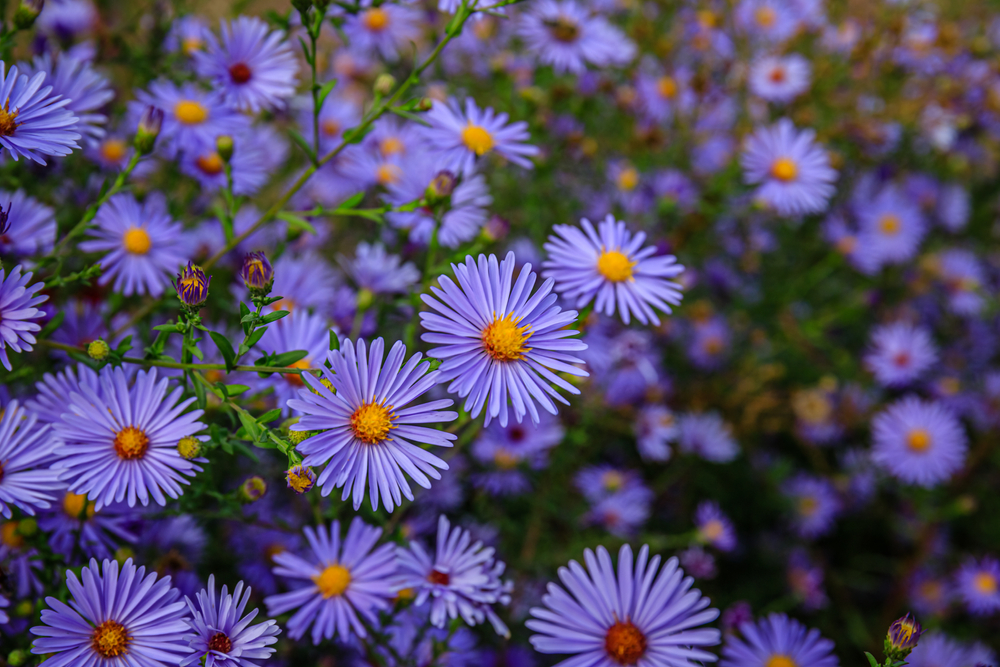
The New England Aster is a classic late-season wildflower known for its vibrant purple blooms. These flowers bloom in late summer and can last into early fall, making them a reliable source of nectar for butterflies. They grow well in a variety of soil types and prefer full sunlight. Planting them in groups can create a stunning visual display in any garden.
These flowers are especially attractive to monarchs and painted lady butterflies. The nectar they provide helps sustain these pollinators as the season comes to a close. New England Asters are also a favorite for gardeners looking to attract late-season pollinators. Their ability to thrive in different conditions makes them a versatile addition to any landscape.
Goldenrod

Goldenrod is often seen as a symbol of late summer, with its bright yellow flowers blooming from late August to October. This plant attracts a variety of butterfly species, including the common yellow swallowtail and painted lady. Goldenrod is drought-tolerant and prefers well-drained soil, which makes it an excellent choice for low-maintenance gardens.
The plant’s dense clusters of small flowers provide ample nectar for butterflies looking to fuel up before the colder months. It is a hardy flower that can grow in both sunny and partially shaded areas. Goldenrod is a native plant that also supports a range of beneficial insects, making it an excellent addition to any garden. It is known for its ability to bloom well into the fall, making it a perfect late-season butterfly magnet.
Joe-Pye Weed
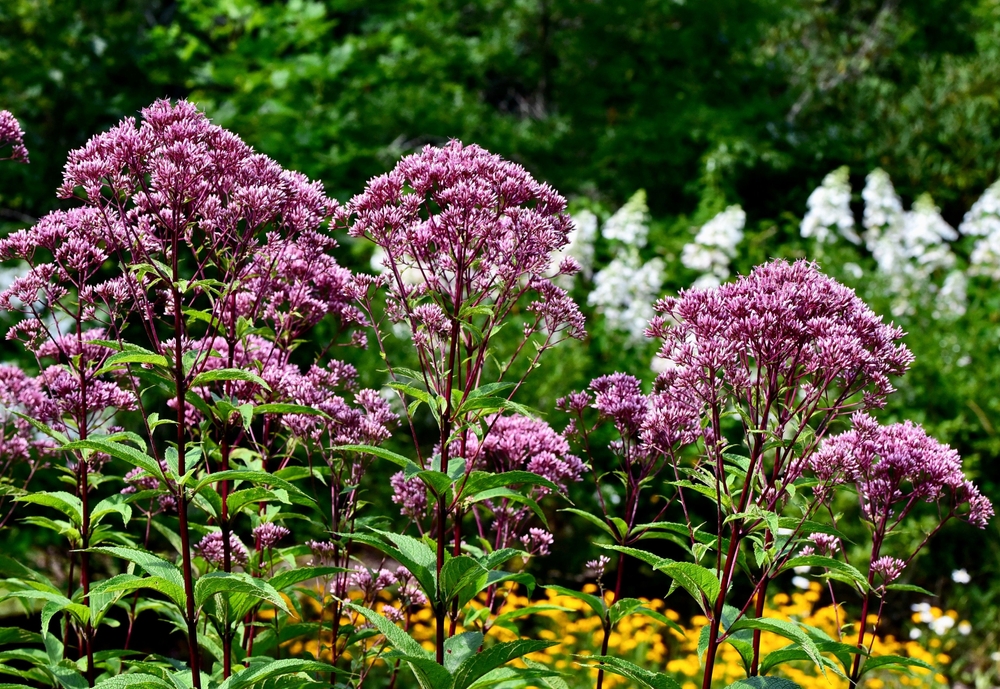
Joe-Pye Weed is another native perennial that continues to attract butterflies in the fall. It grows tall, with clusters of pinkish-purple flowers that bloom in late summer through autumn. The plant prefers moist, well-drained soil and partial shade, making it suitable for various garden settings. Its unique, fragrant flowers draw in butterflies like the Eastern Tiger Swallowtail and the Monarch.
Joe-Pye Weed is not only a favorite of butterflies but also bees and other pollinators. It’s a perfect plant for adding height and texture to the garden while supporting local wildlife. This flower’s long blooming period ensures it will continue to attract butterflies as the growing season winds down. Additionally, its ability to thrive in a range of soil conditions makes it an easy choice for gardeners.
Purple Coneflower

Purple Coneflower, or Echinacea, is a well-loved wildflower that attracts butterflies throughout the late summer and early fall. It is easy to grow and requires minimal care, making it a popular choice for both beginner and seasoned gardeners. The plant’s large, purple petals and conical center provide ample space for butterflies to land and feed. It grows best in full sun and can tolerate dry, well-drained soil.
This plant attracts a wide variety of butterflies, including the Painted Lady and American Lady. Its unique appearance and long blooming season help extend the garden’s appeal to pollinators. Purple Coneflower is also known for its medicinal properties, adding extra value to this hardy wildflower. It thrives well into the fall, making it a perfect addition to any butterfly garden.
Black-Eyed Susan

Black-Eyed Susan, with its golden-yellow petals and dark center, is a stunning addition to any late-season garden. This wildflower blooms from summer into the fall, continuing to attract butterflies as the weather cools. It grows in full sun and is drought-tolerant, thriving in various soil conditions. It’s a low-maintenance plant, making it ideal for gardeners who want to attract butterflies without extensive care.
This flower draws in butterflies like the Swallowtail and the American Lady. Its long-lasting blooms provide nectar that helps sustain pollinators into the cooler months. Black-Eyed Susan is a hardy and reliable choice for a garden that needs color and wildlife support well into the fall. It is a great way to ensure butterflies stay active in the garden as other flowers begin to fade.
Mistflower

Mistflower, known for its fluffy blue or purple blooms, is an excellent choice for attracting butterflies in the late season. The plant thrives in full sun to partial shade and requires well-drained soil. It has a long blooming period, usually from late summer to fall, making it a vital source of nectar for late-season pollinators. Mistflower’s dense clusters of tiny flowers are particularly appealing to butterflies like the Skipper.
Mistflower is easy to grow and can be an effective ground cover for larger areas. It is a reliable late-season bloomer that provides essential resources to butterflies before the winter months. This flower’s adaptability to various garden settings and conditions makes it a popular choice among gardeners. Its ability to support both butterflies and bees further enhances its value in any wildlife-friendly garden.
Ironweed
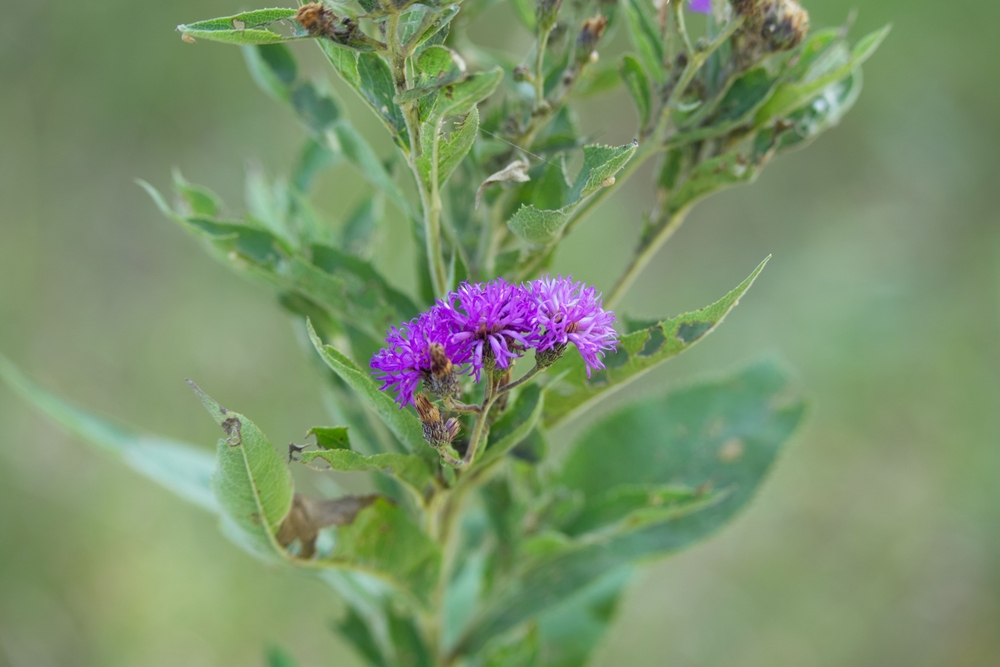
Ironweed is a striking perennial that blooms from late summer through fall, offering rich purple flowers that attract butterflies. This plant thrives in moist, well-drained soils and full sun, making it a great addition to a sunny garden spot. It’s also a hardy plant that can grow in a variety of garden environments, from meadows to the edges of woodlands.
Ironweed is known for attracting butterflies such as the American Snout and Monarch. The plant’s tall, sturdy stems and bright blooms help extend the flowering season, providing late-season nourishment for pollinators. Its ability to attract butterflies into the cooler months makes it an essential plant for any butterfly garden. Ironweed is a must-have for anyone looking to support wildlife in late summer and fall.
Sedum (Autumn Joy)
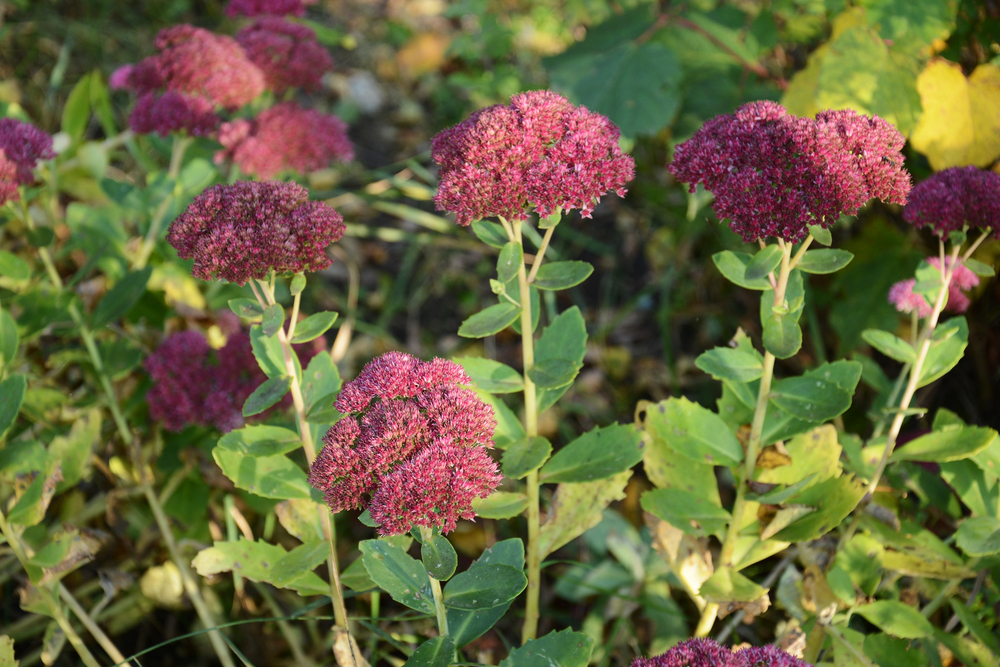
Autumn Joy Sedum, with its late-blooming clusters of pink to red flowers, is a favorite among late-season pollinators. It thrives in full sun and is very drought-tolerant, making it a hardy addition to any garden. The plant’s ability to bloom well into the fall ensures that it remains an important nectar source for butterflies. Sedum’s thick, succulent leaves also help retain moisture, making it an ideal choice for water-efficient gardens.
The late-season blooms attract butterflies such as the Painted Lady and Monarch, which flock to its colorful flowers before the season ends. Sedum’s low-maintenance nature and long-lasting blooms make it a valuable addition to any garden. Its compact size also allows it to be easily incorporated into smaller spaces. Autumn Joy Sedum ensures a vibrant garden while supporting pollinators during the fall.
Yarrow
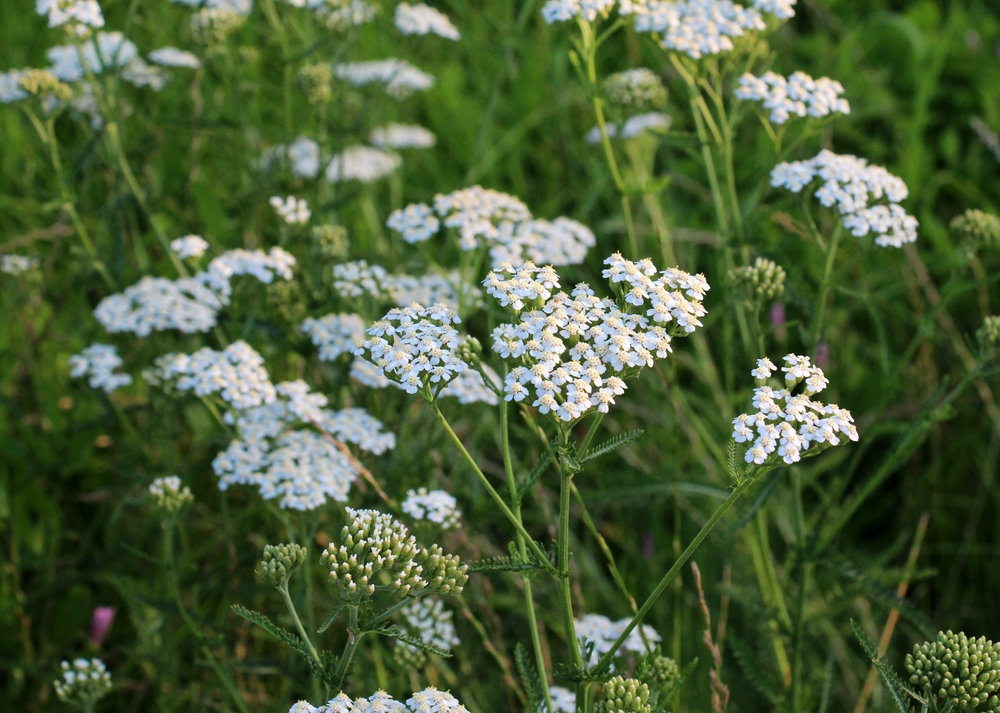
Yarrow is a versatile wildflower that continues to attract butterflies from late summer to fall. It grows well in full sun and can tolerate various soil types, making it a popular choice for many gardeners. Its flat-topped clusters of white, pink, or yellow flowers provide easy access for butterflies to feed. Yarrow is also drought-tolerant, making it a reliable plant for gardens that experience dry conditions.
Butterflies like the Common Swallowtail and Painted Lady are especially drawn to Yarrow’s nectar. This flower is easy to grow and can be planted in garden beds or containers. It blooms for an extended period, making it a vital resource for butterflies as other plants begin to fade. Yarrow is an excellent choice for gardeners seeking to attract butterflies well into the cooler months.
Swamp Milkweed

Swamp Milkweed, with its clusters of pink or purple flowers, is a great late-season nectar source for butterflies. It thrives in moist soil and full sun, making it perfect for garden areas with good water drainage. This native wildflower blooms from late summer through fall, attracting butterflies like the Monarch and Swallowtail. Swamp Milkweed is also a host plant for monarch larvae, supporting both adult butterflies and caterpillars.
This flower’s resilience and ability to attract multiple butterfly species make it a valuable addition to any garden. Swamp Milkweed thrives in wetland areas or rain gardens, making it ideal for gardeners who want to add biodiversity to their landscapes. It also attracts other pollinators, including bees and hummingbirds. The plant’s long blooming period ensures that it will continue to provide food for butterflies as the season progresses.
Cardinal Flower

Cardinal Flower, known for its vibrant red blooms, is a striking late-season wildflower that continues to draw butterflies. It thrives in moist, well-drained soil and partial to full sunlight, making it a versatile addition to many gardens. Its tubular flowers are ideal for attracting butterflies like the Pipevine Swallowtail and the Red-spotted Purple. The bright red color of the blooms adds a pop of color to any garden during the late summer and fall months.
Cardinal Flower is also a favorite among hummingbirds, further adding to its appeal. This wildflower blooms later than many other plants, ensuring that it provides nectar for butterflies as the season winds down. Its striking appearance and ability to support pollinators make it a must-have for any butterfly garden. Planting it near water features or damp soil helps it thrive.
Blanket Flower
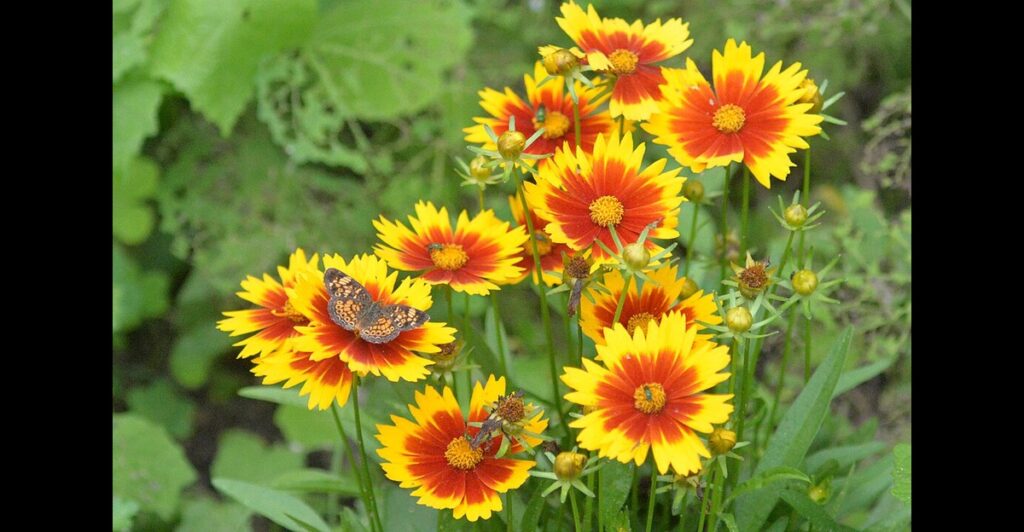
The Blanket Flower is a hardy perennial that continues to bloom in late summer through fall, providing color and nectar for butterflies. It thrives in full sun and can tolerate poor, dry soils, making it an excellent choice for low-maintenance gardens. Its bright orange and red flowers are eye-catching, and its long blooming period attracts butterflies like the Painted Lady and Common Buckeye.
This wildflower is not only attractive to butterflies but also drought-tolerant, requiring little care once established. Blanket Flower adds a vibrant touch to gardens while supporting pollinators in the late season. It is perfect for gardeners who want to extend the life of their garden’s blooms. Its ability to withstand dry conditions makes it an easy choice for a low-maintenance butterfly-friendly garden.
Wild Bergamot
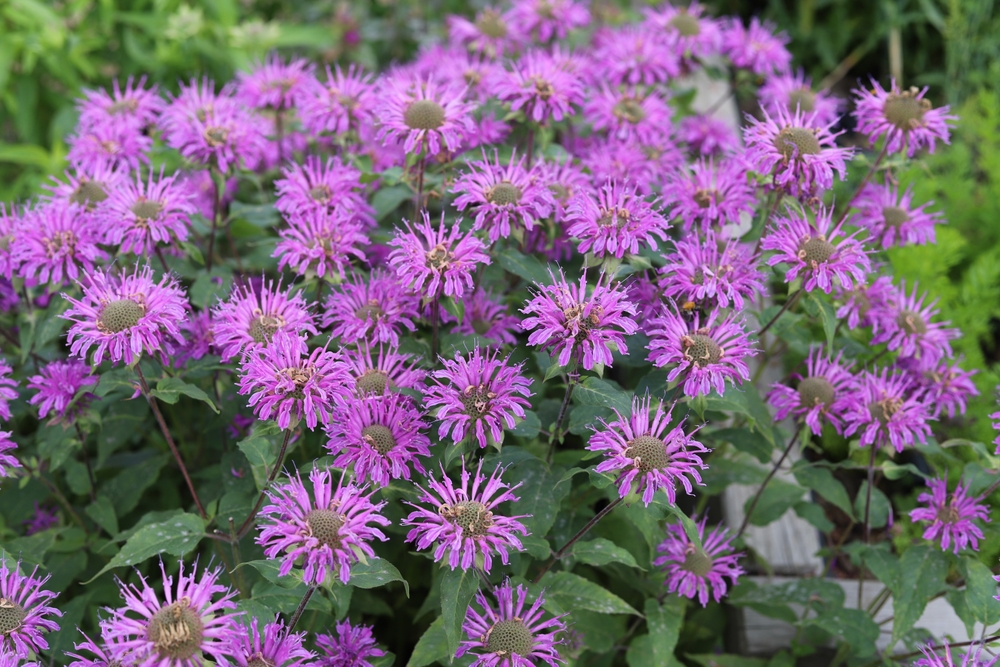
Wild Bergamot, with its lavender-pink flowers, is another excellent choice for attracting butterflies in the late season. This plant thrives in full sun and well-drained soil, making it ideal for a variety of garden conditions. The flowers’ sweet fragrance and abundant nectar draw butterflies like the Monarch and Fritillary. It blooms from mid-summer through fall, providing a vital food source for late-season pollinators.
Wild Bergamot is also a native plant, making it an eco-friendly choice for gardeners looking to support local wildlife. Its unique, aromatic flowers add interest to the garden, while its nectar benefits butterflies and other pollinators. This flower’s resilience and ability to grow in different soil types make it a versatile addition to any garden. Wild Bergamot ensures that the garden remains full of life as the season draws to a close.
Butterfly Bush
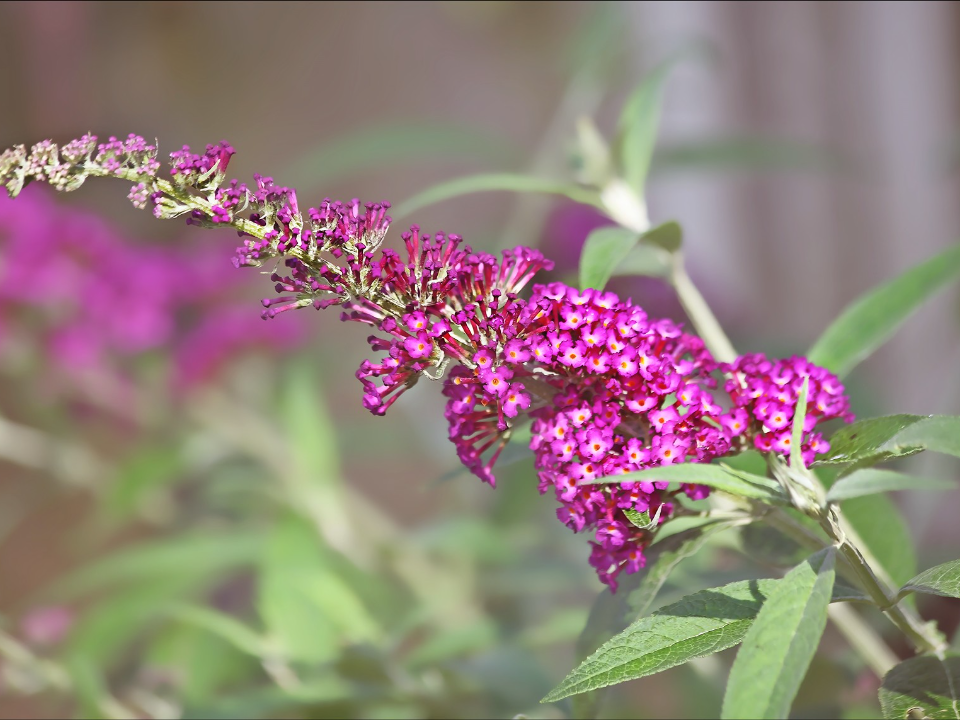
The Butterfly Bush is a late-season favorite, offering long spikes of colorful flowers that draw butterflies throughout the fall. It thrives in full sun and well-drained soil, making it a reliable choice for gardeners seeking a low-maintenance plant. The plant’s long blooming period ensures that butterflies continue to visit well into the cooler months. Its flowers come in various colors, including purple, pink, and white, attracting different butterfly species.
This plant is particularly popular for its ability to attract a wide range of butterfly species, from Monarchs to Swallowtails. It also adds vertical interest to garden beds, with its tall spikes creating a striking visual impact. Butterfly Bush is an excellent plant for gardeners looking to create a butterfly haven. Its late-season blooms help extend the time that butterflies are active in the garden.
This article originally appeared on Avocadu.
